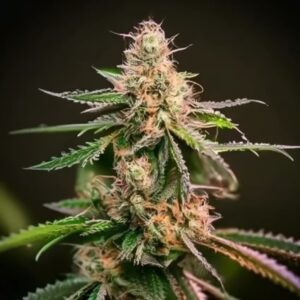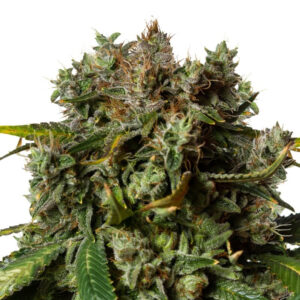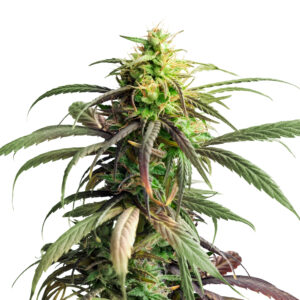Cannabinoids are what make the world go round for every medical marijuana patient. After all, it’s cannabinoids that they can thank for providing them with the relief of pain, anxiety, inflammation, and nausea just to name a few.
There are over 100 cannabinoids in cannabis that go to work when you consume it by imitating compounds our bodies produce called endocannabinoids. Endocannabinoids help maintains internal stability and health by mediating communication between cells. So when there is a problem with our endocannabinoid system we get bad symptoms and complications.
As you consume cannabis, the cannabinoids bind to receptor sites in your brain, which are called CB-1 receptors, and our body called CB-2 receptors. Depending on the cannabinoid it will have different effects according to which receptor it binds to. For instance, THC will bind to receptors in the brain and CBN will bind to CB-2 receptors in the body. Each cannabis strain has a different cannabinoid profile which is why specific strains are known to help with specific ailments. Let’s take a look at some of the most common cannabinoids and how they can help you.
The most famous of all cannabinoids is THC which stands for delta-9-tetrahydrocannabinol. This cannabinoid is the reason for the psychoactive effect you experience when consuming cannabis. As it binds to receptors in the brain it causes the release of dopamine giving the user a sense of euphoria and well-being. THC is the most studied of all cannabinoids and for good reason. The researchers at the Complutense University of Madrid found that THC actually causes tumor cells to auto-digest themselves in animal models. This means that THC could play a role in reducing tumor size and prevalence. Other ways that THC could medically be helpful are with PTSD, multiple sclerosis, cancer, Crohn’s disease, and neuropathic pain.
Another cannabinoid that has become the focus of many medical researchers is CBD. Although THC and CBD are both cannabinoids they are very different. CBD is not psychoactive like THC. They also connect on receptors in different locations as CBD has a little binding affinity for neither CB-1 nor CB-2. CBD truly has incredible therapeutic value. One of the most documented disorders that CBD has helped with is epilepsy and many families can thank it for saving their epileptic children. Other diseases and disorders helped by CBD are anxiety, schizophrenia, lupus, diabetes, Parkinson’s disease, cancer, motor disorders, chronic and neuropathic pain, and various pediatric diseases.
Another common cannabinoid is cannabichromene or CBC. Like CBD, CBC is also non-psychoactive. There has been research on this cannabinoid showcasing all its wonderful properties. In 2010 research was done on CBC that proved its potential in fighting inflammation, especially when it’s combined with THC. This research also helped support the idea that cannabinoids work synergistically with each other. CBC has also shown some promise in fighting breast cancer when coupled with other cannabinoids, it may act as an antidepressant, it’s antifungal, and encourages brain growth.
The cannabinoid Cannabinol, or CBN, appears when cannabis buds have gone stale. This is because THCA breaks down over time and becomes CBN. Next time you forget to store your bud properly don’t get overly upset as CBN has a wealth of medicinal properties. It has been found effective as an appetite stimulant, pain reliever, and anti-asthmatic, eases symptoms of ALS, and is a potential medication for glaucoma. Not only that, Italian researchers found that it was effective against MRSA infections. Steep Hill Labs claimed it to be the most sedative of all cannabinoids; a good dose of CBN actually be equivalent to 2.5-5mg of the pharmaceutical sedative diazepam. CBN research will be on the rise with so many impressive qualities.
Cannabigerol, or CBG, is another cannabinoid not to be overlooked for its many medicinal properties. Like CBD and CBC, CBG is also non-psychoactive. Science has proven that cannabinol has many beneficial effects. CBG is antimicrobial and kills different types of fungi and bacteria. It has been found to be good for your skin and has therapeutic potential for skin conditions like Psoriasis as it prevents the reddening of the skin. Other medicinal properties of this cannabinoid are a pain reliever, anti-tumor, and mood stabilizer.
It is truly amazing how many medicinal qualities a cannabis bud contains all its cannabinoids. These were just a few that have been studied. Scientists still have a long way to go to understand how each of the cannabinoids functions and the wealth of medicinal properties they all have.
Disclaimer: This content is intended for recreational and educational purposes only and is based on research from external sources. It is not meant to substitute for professional medical advice. Please consult your doctor before starting any new treatment. Ensure you are aware of your local laws regarding the use of cannabis.
Cannabinoids interact with the body’s endocannabinoid system, binding to CB-1 receptors in the brain and CB-2 receptors throughout the body. This interaction mediates communication between cells, influencing various functions and alleviating symptoms such as pain, anxiety, inflammation, and nausea. THC, for example, binds to brain receptors and produces a euphoric effect, while CBD interacts minimally with these receptors and provides therapeutic benefits without a high.
Each cannabinoid offers unique medical benefits. THC is known for its psychoactive effects and potential to reduce tumor size, as well as aiding conditions like PTSD and multiple sclerosis. CBD is celebrated for its non-psychoactive therapeutic effects, particularly in treating epilepsy, anxiety, and chronic pain. CBC and CBG also offer non-psychoactive benefits, such as anti-inflammatory properties, pain relief, and potential in fighting cancer and skin conditions.
CBN, which forms as THC degrades, is known for its sedative properties and potential in treating glaucoma and MRSA infections. CBG, another non-psychoactive cannabinoid, has antimicrobial properties and benefits for skin conditions like psoriasis. Both cannabinoids highlight the diverse therapeutic potential of cannabis, extending beyond the more commonly known THC and CBD.
[magento_products id=”28,29,30,32″]













Related Posts

In this article, we will examine the science behind CBD’s alleged relaxation-enhancing properties.

CBD can help with a variety of ailments and pains, but what about muscle pain? There are several ways to relax your muscles and help them to recover. You can give your muscles rest and you can use special compression tape or take an ice bath. But more athletes use CBD, why is that?

The global fascination with cannabis is soaring, with people seeking its benefits in various domains. CBD, the non-psychoactive component of cannabis, has found its way into skincare, haircare, cosmetics, and wellness products.